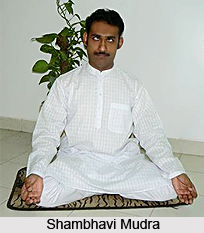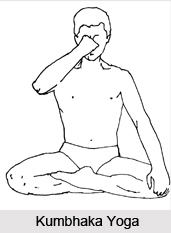 Hatha yoga exercises are often solely emphasized so much that in the absence of theoretical backing it`s usually perceived as that of an exercise regime. The strongest emphasis is placed upon the benefits to the physical body, and, although its postures and breathing techniques do indeed provide an excellent programme of physical exercise, the immense advantage can be gained only by integrating philosophical knowledge with that of Practice.
Hatha yoga exercises are often solely emphasized so much that in the absence of theoretical backing it`s usually perceived as that of an exercise regime. The strongest emphasis is placed upon the benefits to the physical body, and, although its postures and breathing techniques do indeed provide an excellent programme of physical exercise, the immense advantage can be gained only by integrating philosophical knowledge with that of Practice.
Hatha Yoga works primarily with prana, aiming to harness and channel this vital force. The practice regime progressively increases the duration of time for which prana can be retained within the subtle body. All the Hatha methods are one by one arranged in a sequential manner to purify body as well as mind, so that the inner power can be harnessed through a combination of mind and body to a united goal. As powerful as the Kundalini Shakti is, a great amount of preparation has to be done to handle that kind of force.
It is through these practices does the yogi achieve merge with his Identity as Brahma. But it is also important to keep the perspective fixed on the goal, and do not make the bodily strength and powers its aim. To achieve this difficult balance, a proper perspective is required, where although utmost attention is paid to the body to make it strong and worthy, a sense of detachment should also prevail for the same. One can harness this by:
Abhyasa (Practice): Abhyasa involves diligent engagement in different modes of activities. The active efforts are designed to condition the mind to brings enhanced `steadiness`.
Vairagya (Detachment): Vairagya consists in a systematic de-conditioning of the mind, centering on detachment non-identification with the various modes of phenomenal existence.
These two poles are intended to lead to the vision of the Self or `Self-revelation` which in itself is the highest state of non-attachment. Non-attachment should not be understood to imply that the practitioner is seeking a passionless state of indifference towards worldly events. In the most external sense, It can be understood that a yogi will retire from social activity for longer or shorter periods of time, and usually temporary, withdrawal. Thus, the process of hatha-yoga can be described in terms of a gradual cessation of ordinary human activity, and gaining more insight in the "self".
 The central techniques of hatha-yoga are Asana, Kumbhaka, mudra, and meditation upon an internal object (usually either manifestations of light or sound). The short Steps of Abhyasa, with the attitude of Vairagya are as follows:
The central techniques of hatha-yoga are Asana, Kumbhaka, mudra, and meditation upon an internal object (usually either manifestations of light or sound). The short Steps of Abhyasa, with the attitude of Vairagya are as follows:
Mudra
Kumbhaka`s goal is to achieve the prana or breath retention, and the assistance that seals that retention is "Mudra". In short, breathing goes hand in hand with Mudra`s completing a closed circuit for proper induction of Pranayama. Mudra basically refers to the kind of hand position or gesture and a muscular contraction or other physical position, which facilitates the retention of prana within the body and focuses awareness on a particular point. Bandhas are the principle contactions that means `lock` or `binding`. The hatha texts do not provide much information regarding hand positions. Occasional references to hands appear in the descriptions of Mudras of the second sort. Mudra as locks are given prominent importance in the textual works mentioned. Some of the important mudras are Uddiyana Bandha, Mula Bandha, Jalandhara Bandha, Maha-mudra, Maha Bandha, Mahu-vedha, Khechari Mudra, Vipantakarani, Vajroli-mudra, Shakticalam-Mudra and Sambhavi - Mudra.
Yamas, Niyamas
Hatha yoga is more than just a regime. Its an integral part of One`s Attitude and lifestyle. Certain Rules, Truthful habits and ethical responsibilities are the core basis for various Yams and Niyams. These are the prerequisite before embarking on the further Progress in Hatha Yoga. The Yama and Niyama forms the very foundations of yoga. Derived from the verbal root "to hold or to sustain" Yama may be translated as restraint. In yogic context, Yama denotes certain ethical principles regarding "self control" that ought to be cultivated in the aspiring yogi.
These basic moral principles are prerequisite for any disciple keen on progressing further as a yogi. A guru often test and see for himself these qualities in his disciple before bestowing the ultimate knowledge. This is how sanctity of the knowledge is preserved in the worthy hands. Niyama denotes a lesser degree of control and concern mainly with principles that concern one`s attitude to life. In the Yoga-Sutra five yamas and five Niyamas are mentioned, whereas in hatha texts the number of each is generally ten. The Yamas and Niyamas according to Hatha Yoga Pradipika are:
The final Yama shaucha (listed as a Niyama in the Yoga-Sutra ), constitutes a necessity to purify both the body and mind. Mental clarification is the result of various techniques of yoga. For the body, six specific exercises are prescribed. Collectively it is referred as Sat Karmani Or Sat Kriya.
Pranayama and Kumbhaka
Pranayama is the technique of hatha-yoga par excellence, which is both -"the goal" and "the practice". The goal is to retain prana within the Sushumna. The "practice" to achieve it is the extension of the period of retention of prana Vayu in the body. This is achieved by incorporating the performance of very powerful breathing exercises combined with muscular contractions and concentrated mental focus. Pranayama is a threefold practice, the three parts being Rechaka (exhalation), Puraka (inhalation), and Kumbhaka (retention). There is movement of air, prana and thought - all of these being intimately connected in the practices of Rechaka and Puraka.
Kumbhaka is where the calmness of mental faculties are involved. Every movement is held to induce the stillness and ultimate dissolution of mental modifications (chitta-vritti). Kumbhaka denotes the suspension of the flow of prana and breath. However, there are a variety of breathing techniques in Kevala kumbhaka, which result in complete retention. These techniques are themselves referred to as types of Kumbhaka. Kumbhaka itself is divided into two kinds:
Sahita (supported) - Kumbhaka involves the retention of breath and prana as part of a cycle of inhalations and exhalations. This may be further divided into Antara-kumbhaka (`inner retention` i.e. retention with the breath held in) and Bahya Kumbhaka (retention with the breath held out).
Kevala (complete, total) - Kumbhaka, involves holding the breath for an indefinite period, without the requirement to inhale or exhale. In this state, prana is fully retained within the Nadi-matrix and is forced into the central channel of Sushumna.
Hatha yoga has much more to offer, and the followers who have an open eye for the philosophies often sense this and esoteric knowledge the discipline has to offer. This brings an extra and the most fruitful dimension in their practice and being. However, the fact that remains is that whether its considered as a means for physiological well-being, or vehicle of self-enfoldment, Hatha yoga remains to be a crucial branch of knowledge with a perspective to human life that cannot be ignored.



